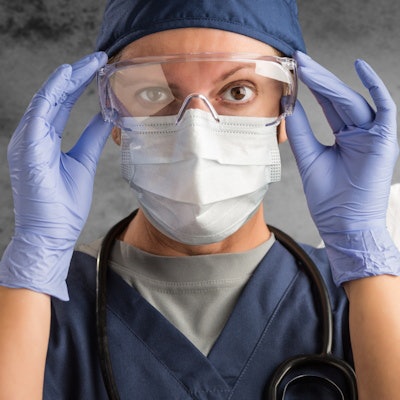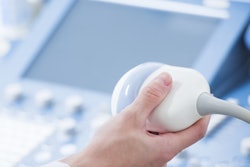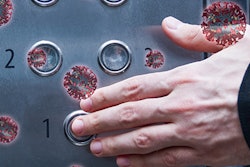
Radiologists from a hospital in China have outlined four measures radiology departments can take to control the spread of COVID-19. Their processes were published online March 24 in the Journal of the American College of Radiology.
Putting aggressive control measures into place is crucial to protect radiology staff, wrote a team of researchers led by Dr. Zixing Huang of West China Hospital at Sichuan University in Chengdu, China. West China Hospital is a national regional medical center with 4,300 beds.
"With severe infectious diseases such as COVID-19, the highest level of infection control measures must be implemented," the group wrote. "These include providing adequate standard protective equipment, training staff, and instituting proper emergency plans."
Huang and colleagues described four actions the radiology department took to control infection spread among staff and patients.
- Established an emergency management and infection control team, chaired by the radiology department director. The team's responsibilities include coordinating infection control between hospital management and radiology, collecting and disseminating to staff current infection control information (often via the WeChat app), and developing an emergency plan to ensure the department continues to function normally.
- Reconfigured the radiology department. The emergency management team divided the department into "contaminated," "semicontaminated," "buffer," and "clean" zones. The contaminated area is isolated with physical barricades and includes CT and digital radiography exam rooms designated for patients with suspected or confirmed COVID-19. The semicontaminated area has a fever-CT control room (see below) and patient exam areas, while the buffer zone features access areas for medical staff and a dressing space for technologists. The administrative office and the reading room are in the clean area.
- Provided personal protection gear and staff training. The team ensures that its staff have protective gear and requires them to wear and remove this gear according to infection control protocol. To mitigate stress, it offers technologists a four-hour break from the contaminated area once per week; it also monitors staff for symptoms of COVID-19. Staff are regularly reminded to take personal protective measures (not touching the mask or their eyes, washing their hands).
- Established a "fever CT" protocol. The protocol is reserved for scanning patients with fever or who are suspected of having COVID-19 and includes the following:
- Notifying the radiologist in advance of a patient with suspected disease
- Routing the patient to the fever-CT waiting area through a fever access area
- Performing the exam, then disinfecting the equipment (chlorine wipes, turning off air conditioners to prevent air contamination, using ultraviolet light for 60 minutes, four times per day)
With these measures in place, 3,083 people with fever underwent CT exams between January 21 and March 9, and no radiology staff showed signs of being infected with the novel coronavirus, Huang's and colleagues noted.
"We believe that our experience in management, the reconfiguration of our radiology department, and the workflow changes implemented in the current COVID-19 situation are useful for other radiology departments that must prepare for dealing with patients with COVID-19," the group concluded.





















